Cola Nut: [Cultivation, Irrigation, Associations, Pests and Diseases]

Important points when sowing Cola Nut
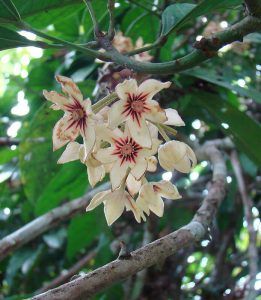 Where to sow? In full light. It needs a lot of sunlight.
Where to sow? In full light. It needs a lot of sunlight.- When? In spring or in summer.
- How do we prepare the land? Removed, removing weeds. With very fertile and well drained substrates.
- How do we water? With drip.
- How often do we water? Inabundant summer. Rest of the year, spaced irrigation.
- Plagues and diseases? Resistant to pests and diseases, take care of it from excess moisture that can cause fungi.
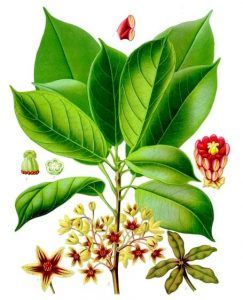 The cola nut, also known by its scientific name as cola acuminata, is the fruit of the cola tree. It belongs to a family of African tropical plants with more than a hundred species.
The cola nut, also known by its scientific name as cola acuminata, is the fruit of the cola tree. It belongs to a family of African tropical plants with more than a hundred species.
The tree can reach twenty meters in height, produces yellow flowers and fruits in the shape of a pointed star.
Its seeds are bitter and are consumed for its stimulating effect on the nervous system, since it contains theobromine and more caffeine than coffee. It is also marketed for its flavoring effect that is added to some drinks.
It is the seed of a 6-meter tree that grows in Africa, Jamaica and Brazil. The cola nut used to be one of the ingredients in Coca-Cola. It has vasodilator, diuretic and metabolism stimulating properties.
The cola nut is considered an excellent aphrodisiac, it has a great antimicrobial action and it is also a very effective astringent. There are a series of regulations for the use of the cola nut and this is due to its amounts of caffeine.
It is not recommended in case of ulcers, tachycardia, anxiety, insomnia, pregnancy or lactation states and in children.
When to sow the cola nut?
The sowing of the cola nut can be done in spring or summer due to the climatic conditions that the plant presents.
Where to do it?
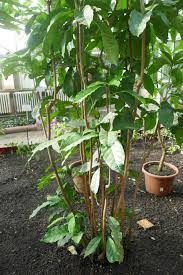 The cola nut grows best in places where the temperature fluctuates between 20 and 26°C and the rainfall is about 2,500 mm per year.
The cola nut grows best in places where the temperature fluctuates between 20 and 26°C and the rainfall is about 2,500 mm per year.
The plant grows well in coastal areas and in jungle conditions, so planting it with a lot of light favors it.
It is necessary to sow it in full sun and because it is a bushy plant that reaches a great height, it is necessary to sow it directly where it is going to develop.
How to prepare the land?
Among the factors that affect the good establishment and productive performance of the cola nut, are: adaptation to soil and climate; resistance to different types of substrate.
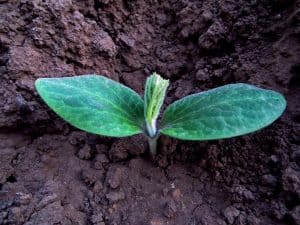 To grow a kola nut, the tree ‘s soil must be deeply rich in vitamins, fertile, and well-drained.
To grow a kola nut, the tree ‘s soil must be deeply rich in vitamins, fertile, and well-drained.
The type of soil in which to develop is extremely important. If the soil or soil does not provide them with what they require then they cannot grow, multiply or flourish well and healthy.
How do we water the cola nut?
Irrigation is essential for the cola nut, although it also withstands drought well.
In the early years of the cola nut, irrigation should be abundant and then a little less, although in its adult stage it could supply itself.
How do we plant a cola nut step by step?
The kola nut tree is propagated from seed, but can also be grown from cuttings. Sowing of seeds of cola nuts can be carried out:
- Germinate the cola seeds in previously moistened sphagnum at a temperature close to 35 ° C.
- Wait 2 to 3 weeks until germination takes place.
- Plant the seeds in pots, once germinated.
- Cover the seeds halfway with peat moss.
- Place the peat in a sprinkling and copiously.
- Leave the pots in a greenhouse until the stem appears.
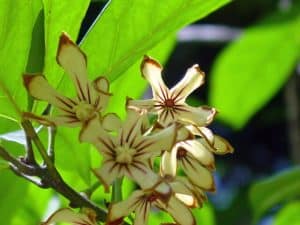 Because the kola nut is a large tree, it is necessary to use specialized equipment for its transplant, for example, a forklift or a ladder to climb.
Because the kola nut is a large tree, it is necessary to use specialized equipment for its transplant, for example, a forklift or a ladder to climb.
The fruit of the cola nut can be removed manually or with sharp knives. Depending on the size of the tree, 10 to 16 kg of seeds can be collected.
What favorable associations does the cola nut have?
The association of crops of compatible plants produces benefits with respect to their cultivation separately, in addition to the use of light, water and/or nutrients.
The seeds of the cola acuminata and the cola nitida have a bitter taste due to their high caffeine content, so they can be surrounded by plants such as guarana, coffee, tea or yerba mate.
What pests and diseases attack the cola nut?
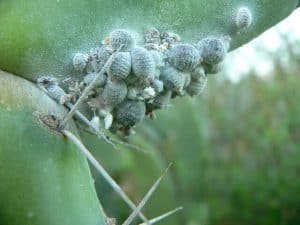 Due to its particular bitter taste, the kola nut appears to be a bushy plant resistant to pests and diseases.
Due to its particular bitter taste, the kola nut appears to be a bushy plant resistant to pests and diseases.
Although because it is a tree planted in full sun it could be attacked by pests such as flies, aphids and mealybugs.
And as for diseases, it is necessary to be attentive to soil moisture since, like many plants of its kind, excess moisture can cause fungal diseases.
Bibliography and references
- Hinke, Nina. The force for the empire. The cola nut. Reproduced from: https://www.revistaciencias.unam.mx/es/104-revistas/revista-ciencias-55/865-fuerza-para-el-imperio-la-nuez-de-cola-en-europ.html. Study.
digital database
- Ecured.com. Cola nut. Reproduced from: http://www.scielo.org.pe/scielo.php?script=sci_arttext&pid=S2077-99172014000300006
- Medicinal plants.com. Cola nut. Reproduced from: https://lasplantasmedicinales.info/nuez-de-cola/
- Ethnoplants.com. Acuminate tail. Cola nut seeds. Reproduced from: https://www.ethnoplants.com/es/plantas-semillas-africa/101-cola-acuminata-nuez-kola-semillas.html
- Plantayflores.com. Cola Nut: origin, description, varieties, cultivation, and uses. Reproduced from: https://plantasyflores.pro/nuez-de-cola/

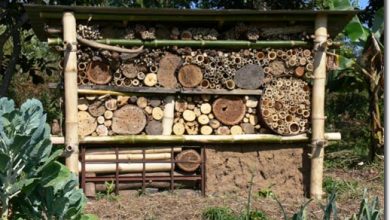
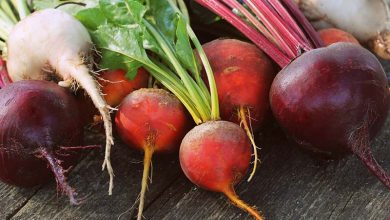
![Photo of Copper in Plants: [Use, Shortcomings, Advantages and Disadvantages]](https://www.complete-gardening.com/wp-content/uploads/2022/08/copper-in-plants-use-shortcomings-advantages-and-disadvantages-390x220.jpg)
![Photo of Walnut Cuttings: [Grafts, Time, Rooting and Planting]](https://www.complete-gardening.com/wp-content/uploads/2022/08/walnut-cuttings-grafts-time-rooting-and-planting-390x220.jpg)